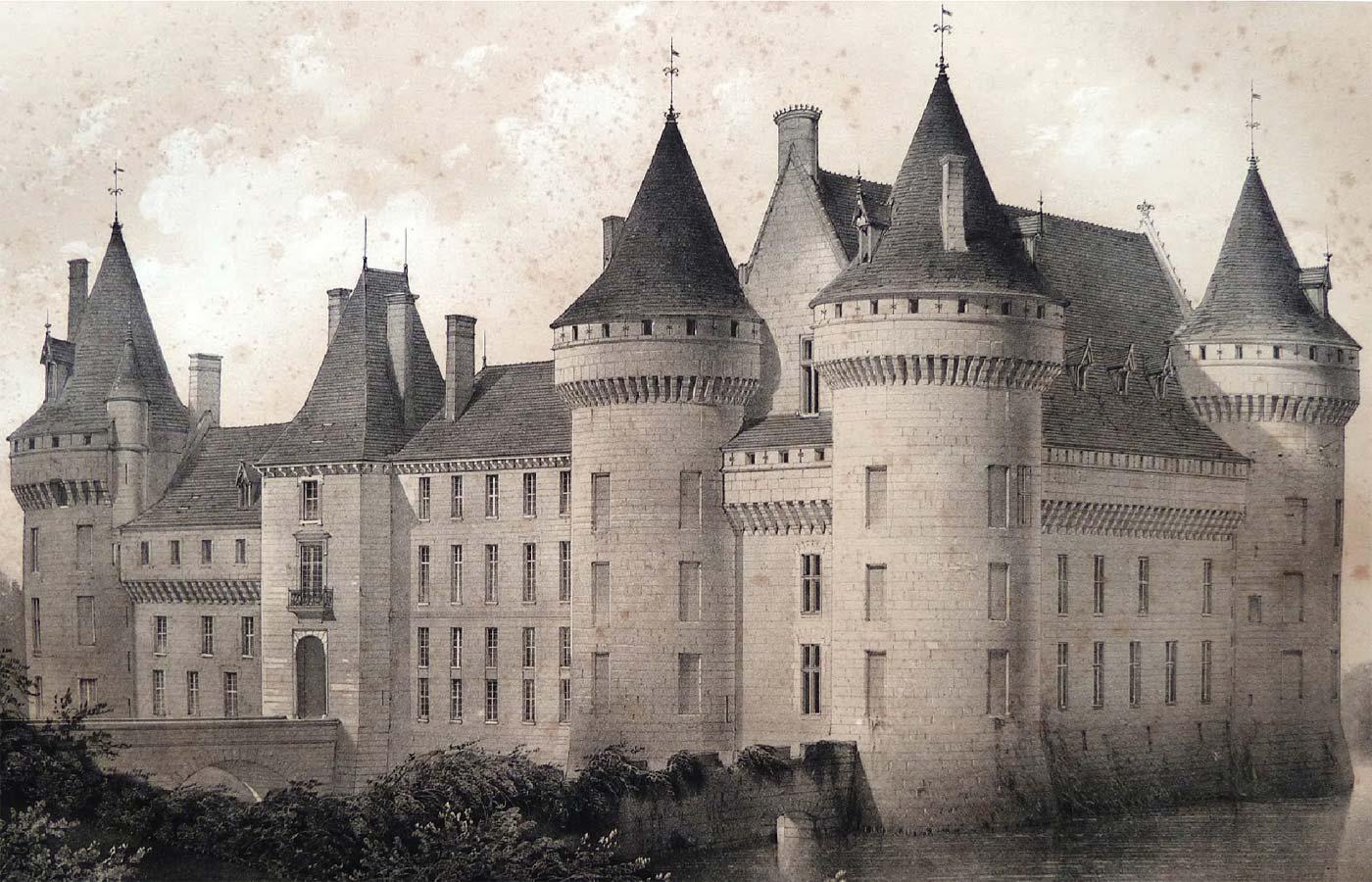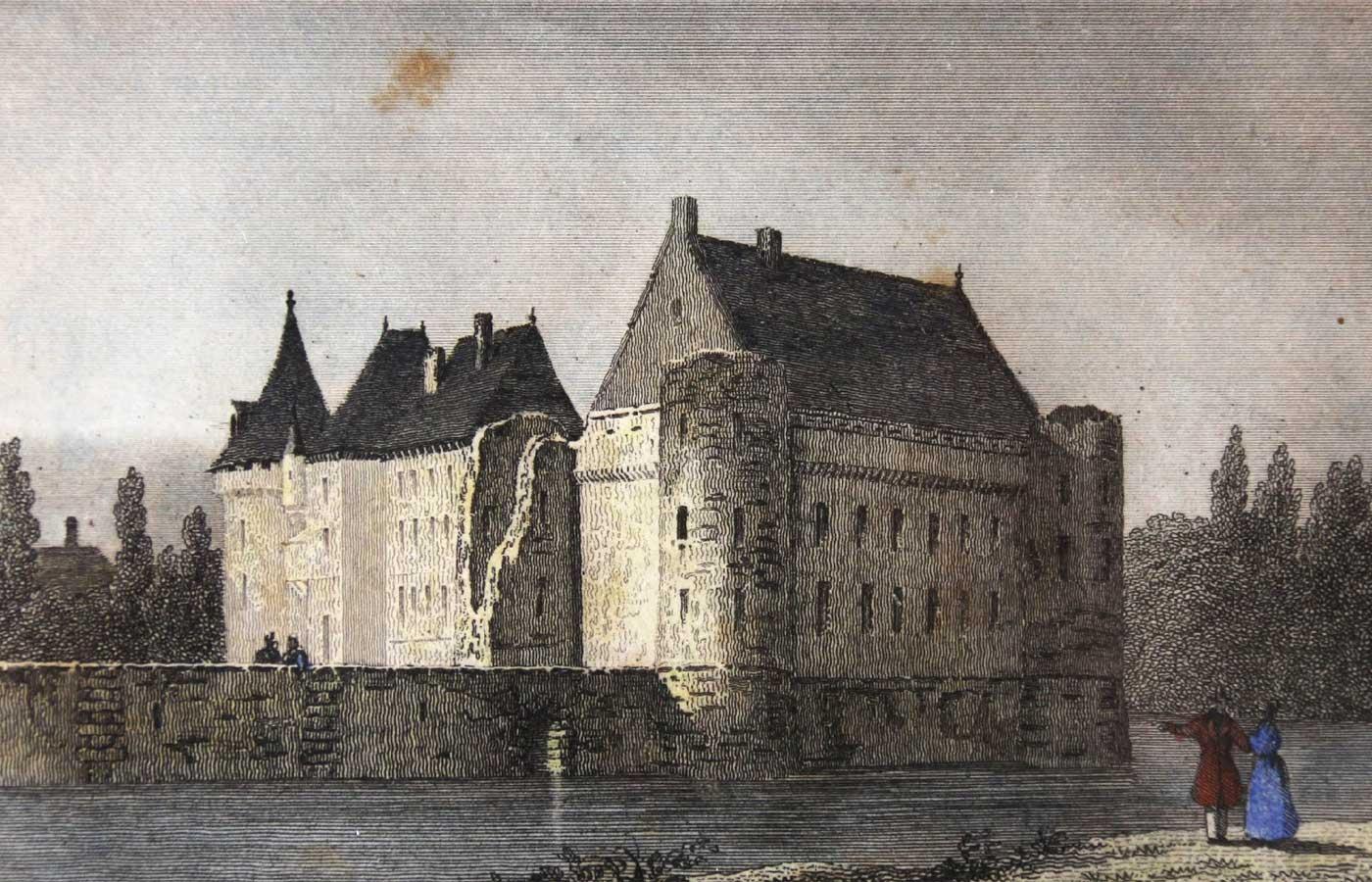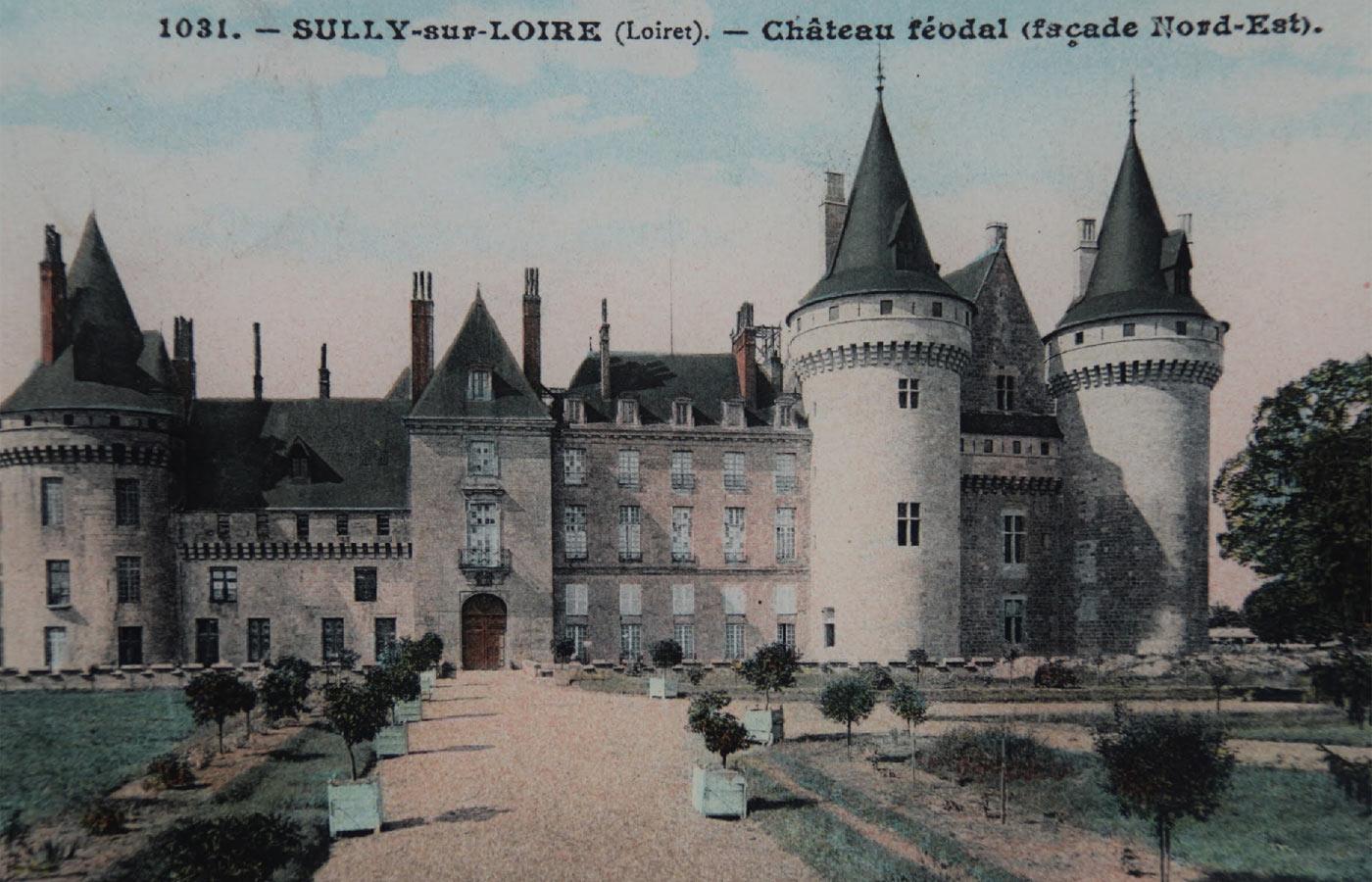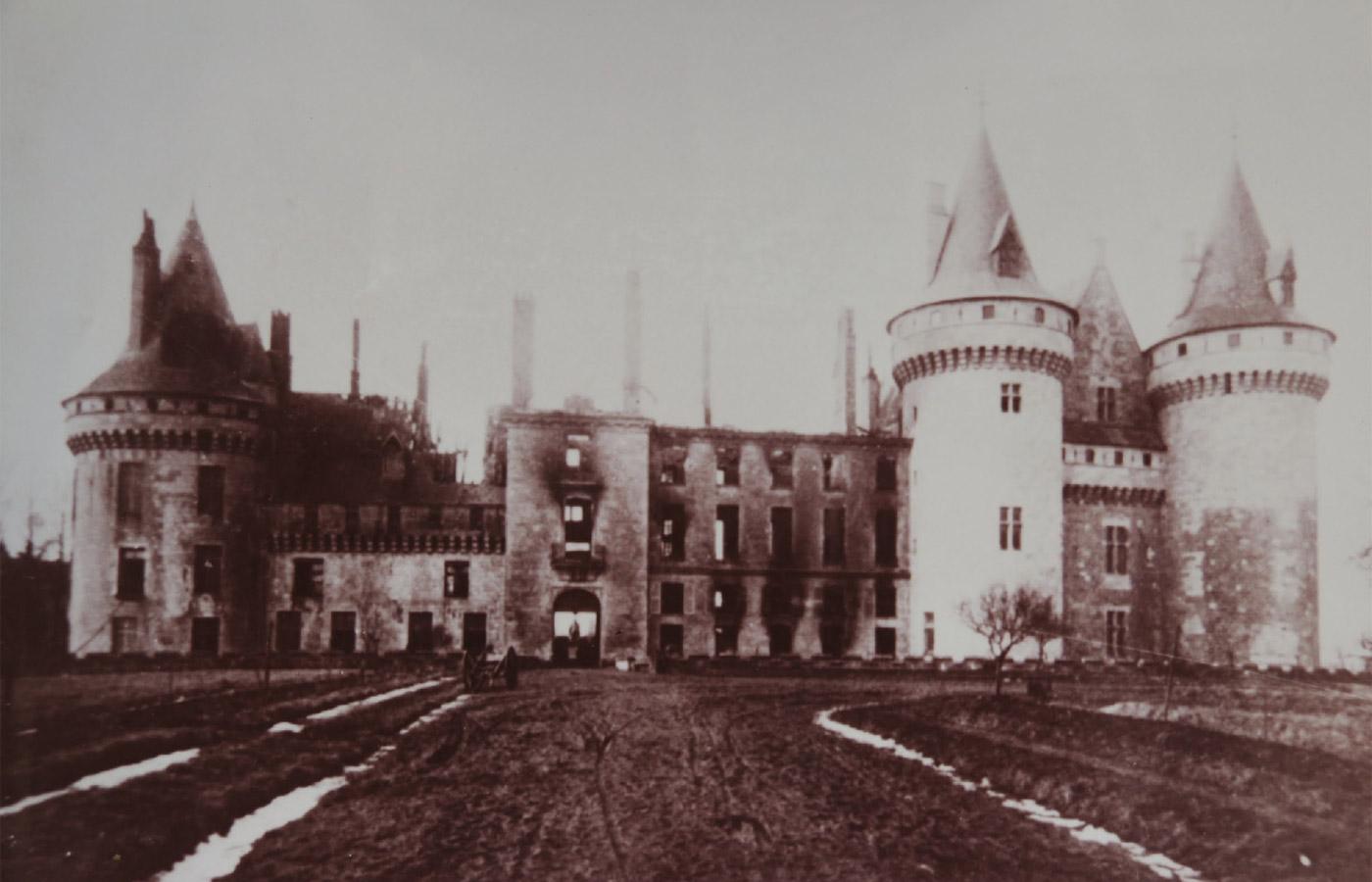The castle from the Middle Ages to today
From 1395 to today, the history of Sully Castle has been full of unexpected developments and its architecture has progressed massively throughout the centuries. An important character is attached to this history; that would be Maximilien de Béthune, the Duke of Sully.
The Middle Ages
The first castle in Sully-sur-Loire to be recorded dates back to 1102. However, the history of the current castle starts in 1395 with the construction of the keep, ordered by Guy VI de la Trémoïlle.
This building had two main functions:
Defence, with the presence of moats, drawbridges, rampart walk, arrowslits etc... This huge building was not built randomly: it protected the crossing on the River Loire which allowed exchanges between Paris and the rest of the land. Let’s not forget that we were on an axis between Burgundy and the Paris Region, a very commercial axis situated along the River Loire where gabarres, barges and toues transported large numbers of merchandise and construction materials.
Splendour, because the keep had to demonstrate the lord’s power via, in particular, its large dimensions (both interior and exterior). It had to impress and be visible from a very far distance. Today, the paintings and tapestries contribute to the restoration of the splendour of this place.
However, the keep was not very comfortable, which is why the lord would order the construction of the petit château circa 1430. Its name was appropriate, the rooms in it were smaller and therefore, more suitable for the lord and his family’s everyday life.
During this same period, Joan of Arc came and met the future Charles VII in 1429. She convinced him to have himself crowned to legitimise himself as king. Joan of Arc returned to the castle later in the year. She was held prisoner there by Georges de la Trémoïlle, owner of the castle and favourable towards the English, so as not to hinder the negotiations with the latter. She ended up escaping and she died in 1431 in Rouen by being burned alive.
The 17th century
Throughout the 17th century, the appearance of Sully-sur-Loire Castle would be radically amended. In 1602, Maximilien de Béthune, the first minister and good friend of King Henry IV, bought the castle. He was appointed Duke of Sully and Peer of France in 1606.
He ordered the construction of the artillery tower (1606) to strengthen the vulnerable part of the castle (town side). He continued this arrangement by ordering the erection of three passageways to connect the different parts of the site: the keep, artillery tower and petit château. This would close the precinct completely and act as a deterrent in case of an attack. To perfect the architecture of this castle, he filled the moats with water by diverging the water from the River Sange which flowed by the castle. The objective was to discourage potential invaders and demonstrate his economic and political power.
In March 1652, the young King Louis XIV came to Sully-sur-Loire Castle during the Revolt which involved the parliamentarian revolt and the noble revolt against the royal authority. It was during this dark period when the “Sun King” sought refuge in the castle and slept for two nights in the king’s room on the first floor of the keep.
The 18th century
At the start of the 18th century, François-Marie Arouet, otherwise known as Voltaire, was in exile in Sully-sur-Loire Castle in 1716 and 1719 particularly. He was taken in by the fifth Duke of Sully, Maximilien Henri de Béthune. He fell in love there with a young local comedian, Suzanne de Livry who he would use as a headline act during theatre representations in the castle including the theatre play “Artémire” which he wrote in Sully-sur-Loire Castle. This theatre play was acted out in the room of honour in the keep. Voltaire stopped coming to the castle from 1725 because he was on bad terms with the fifth Duke.
In 1767, the gallery connecting the petit château and the keep was re-arranged. It was enlarged and a floor was added to it. So, you would see the chatelains’ private apartments there. It was the most luxurious wing of the castle.
During the French Revolution, in 1794, the eight Duke of Sully was in agreement with the revolutionary ideas and wished to show it. Thus, he arranged for the six towers which formed the keep to have their crowns (i.e their roofs) removed, just like the decapitation of Louis XVI.
The 19th and 20th centuries
At the very start of the 19th century, the eight Duke of Sully died as well as his son, with no descendants. Sully-sur-Loire Castle became the property of the Béthune-Sully family (cousin branch of the family).
In 1900, the new owner wished to have the summits of the six towers reconstructed. At the end of the project in 1904, only two towers were completed. The reason: clumsiness from the chef who mixed up the pot of flour and the pot of arsenic when preparing a recipe. The chatelain unfortunately died as a result and that explains why the reconstruction project of the tower roofs of the castle came to an end.
During the month of January in 1918, a fire broke out in the wing which was constructed in the 18th century. Several rooms and a lot of the furniture were destroyed. During the reconstruction in 1920, the gallery lost a floor and a half and remained completely empty. A waterproofing system for the building was set up by reconstructing a roof and strengthening the walls. The rest of this wing was like an empty shell (no floors, no ornaments and no furniture).
The Second World War made its mark on the castle’s history. In June 1940, the framework was hit by shells during intense battles between the two banks of the River Loire. Despite the gaping holes, the framework did not collapse. It was restored a few years later. Restorers estimated that about 80% of the framework was of medieval origin (start of the 15th century), with the rest being from the middle of the 20th century following the restoration.
A few years later, in 1962, the Loiret Departmental Council purchased Sully-sur-Loire Castle as well as its park right under the nose of Charles Trenet who expressed interest in purchasing it. Following this, active restoration and rearrangement campaigns were lead. Because the castle was emptied of its collections before the purchase in 1962, the Departmental Council had a lot to do to enable this over 600-year old ancient building to have recognition again. Refurnishing campaigns are organised regularly: self-financing, donations, legacies, deposits and the partnership with the Mobilier National, enable the castle to have furnished rooms today.
Today
The wing which caught fire in 1918 was re-arranged and refurnished in 2006. The objective was to reconstruct an 18th century apartment. New elements are added regularly and new acquisitions have been realised to unveil the castle’s life throughout time to as many people as possible.
Don’t hesitate to discover Sully-sur-Loire Castle via a self-guided visit or a guided visit. You will discover the entire history of the place in a cosy atmosphere where each room will make you feel at home. Go for a stroll around our 19 rooms, from the large rooms of the keep to the cosy spaces of the “Petit château,” from the King's Room to the duchess’s apartments, from the framework to the dining room etc... The visitors’ route has a lot of surprises for you.





